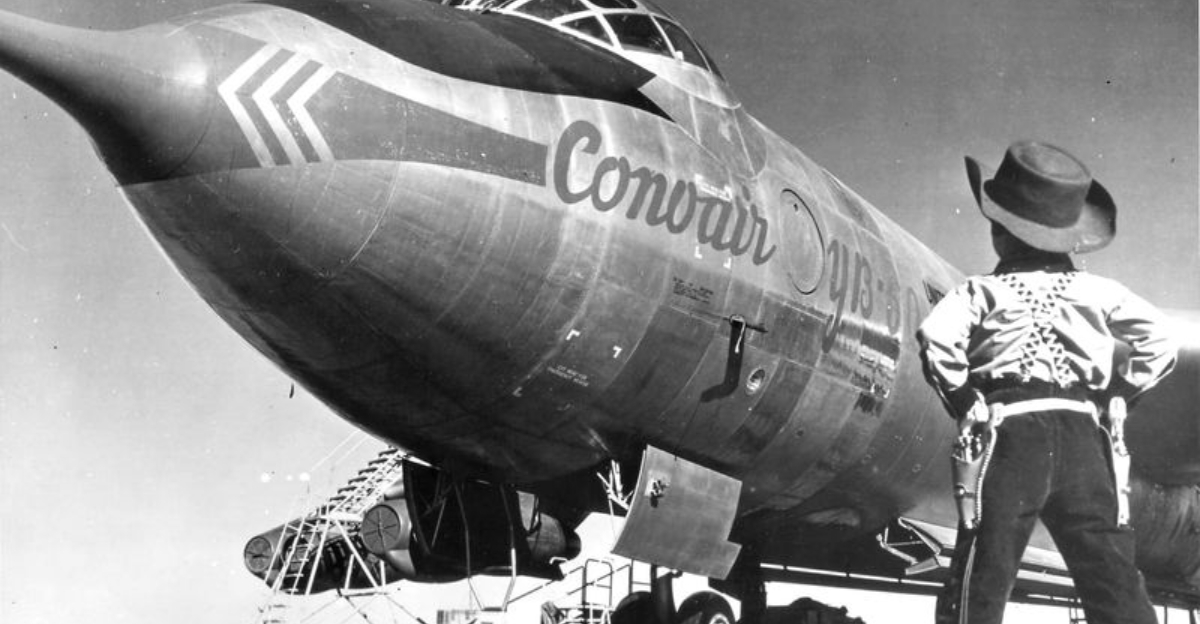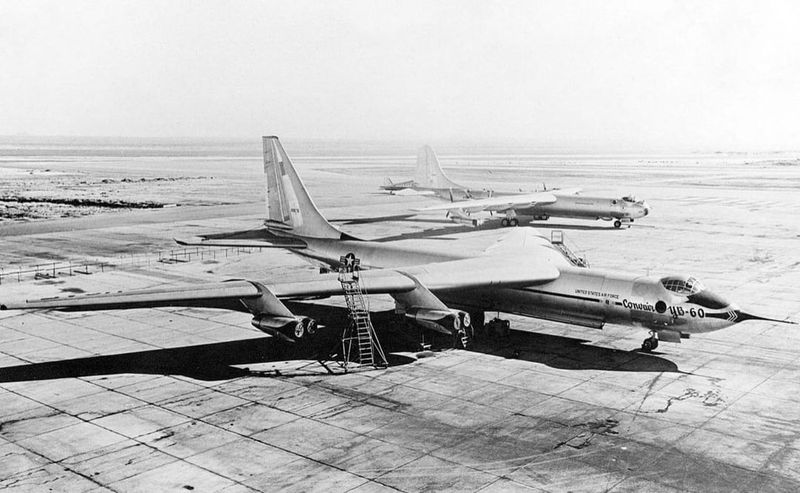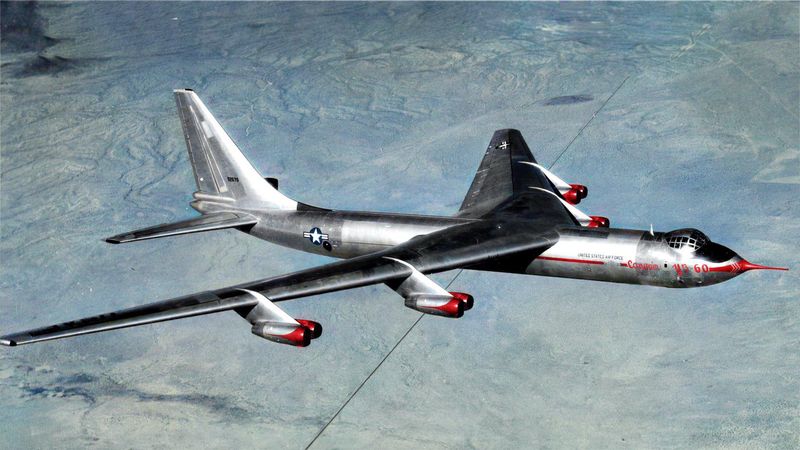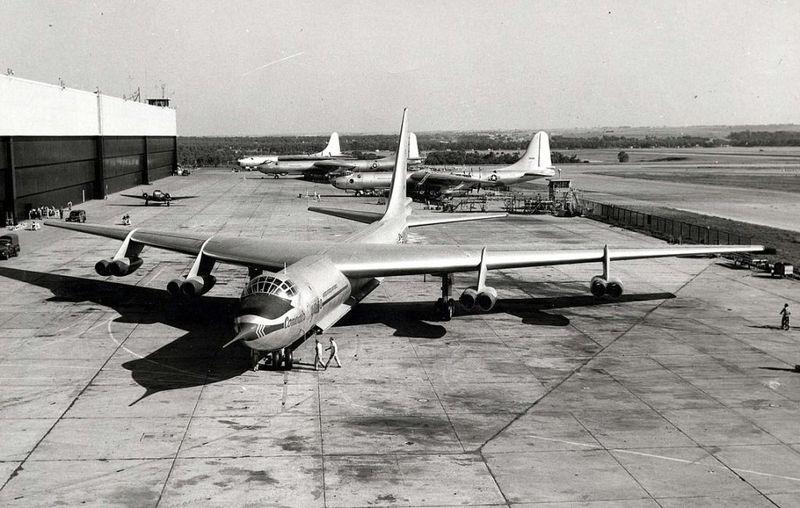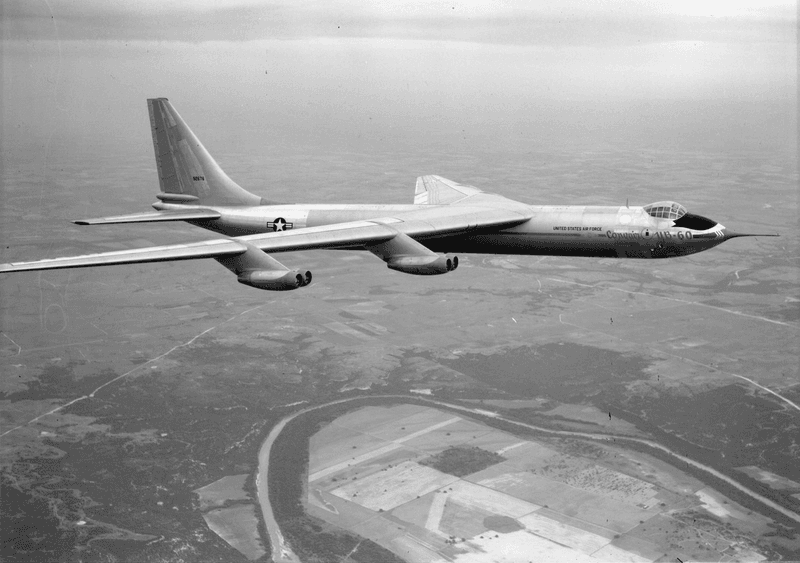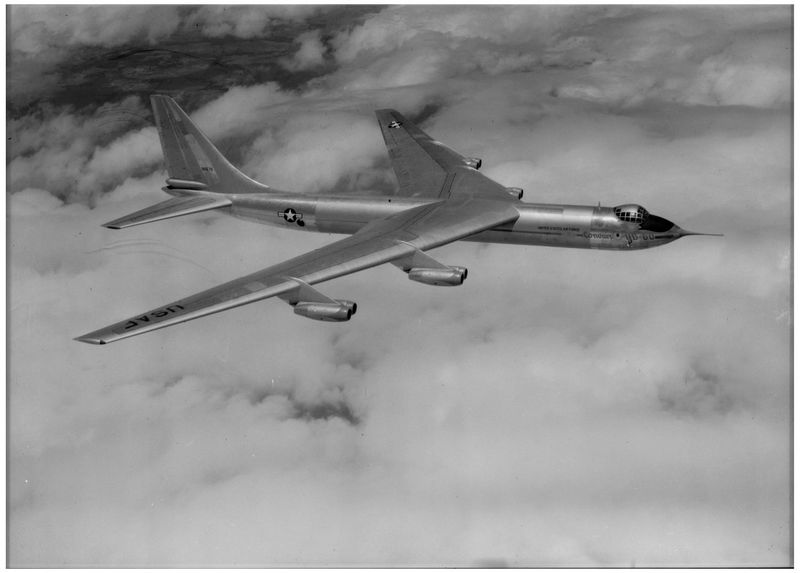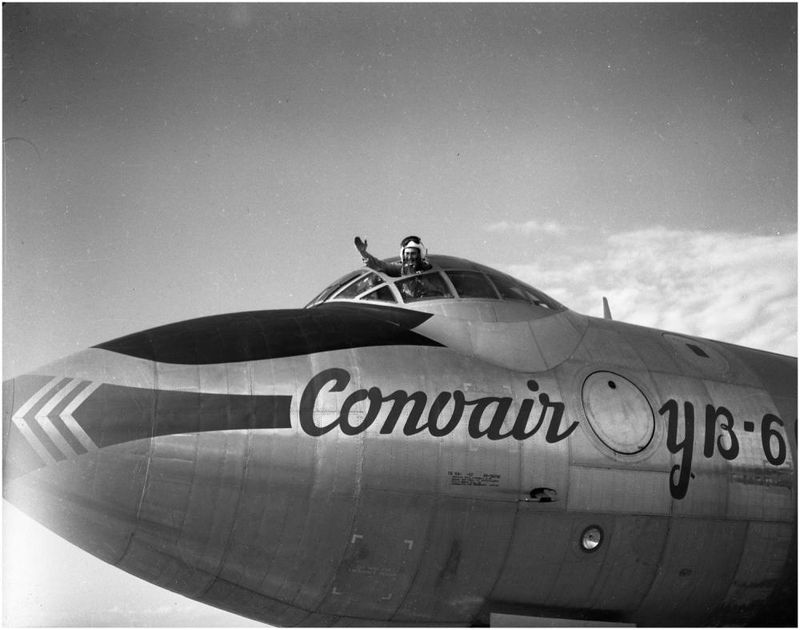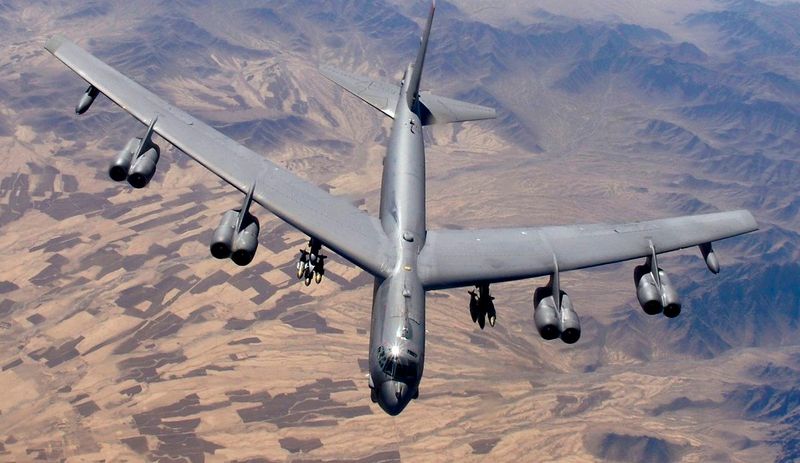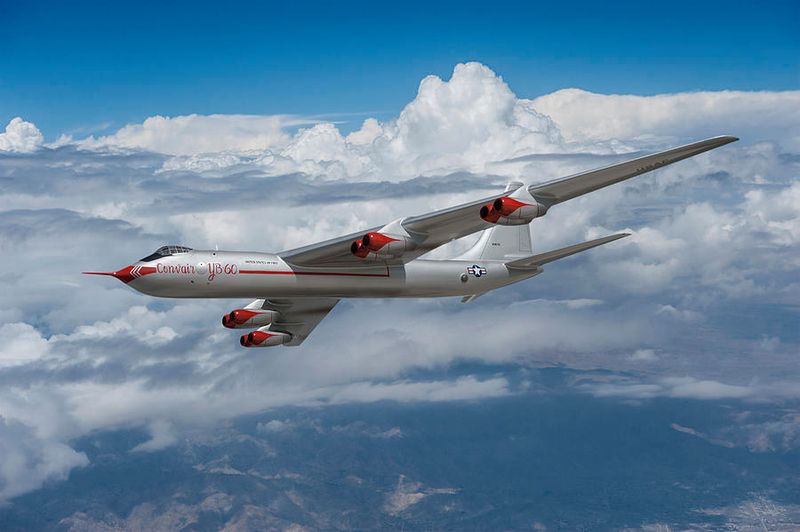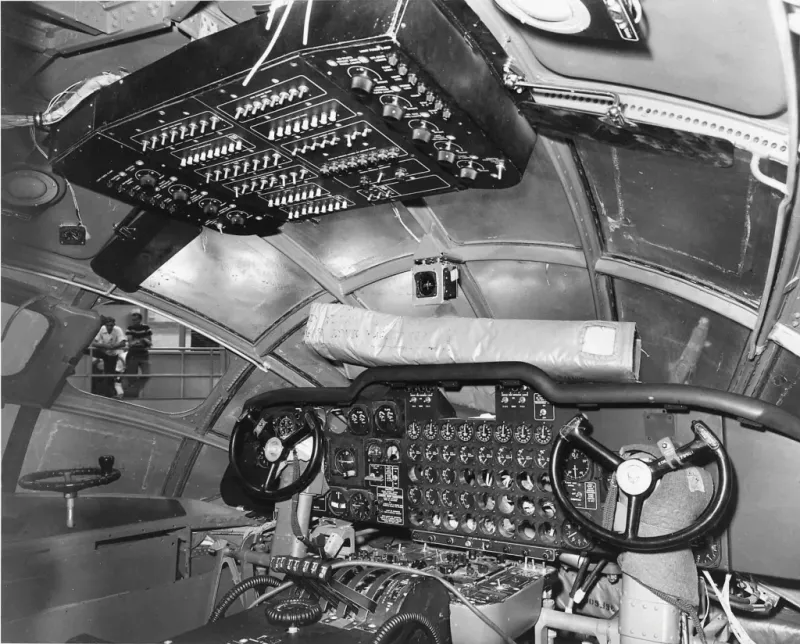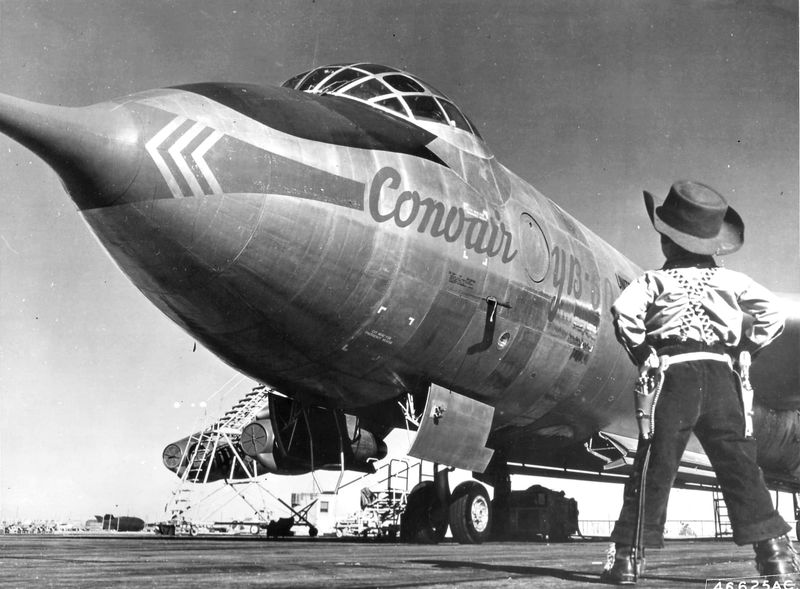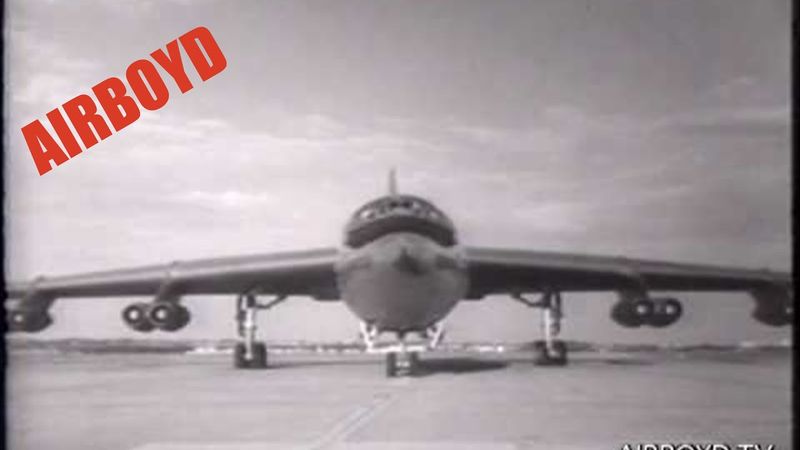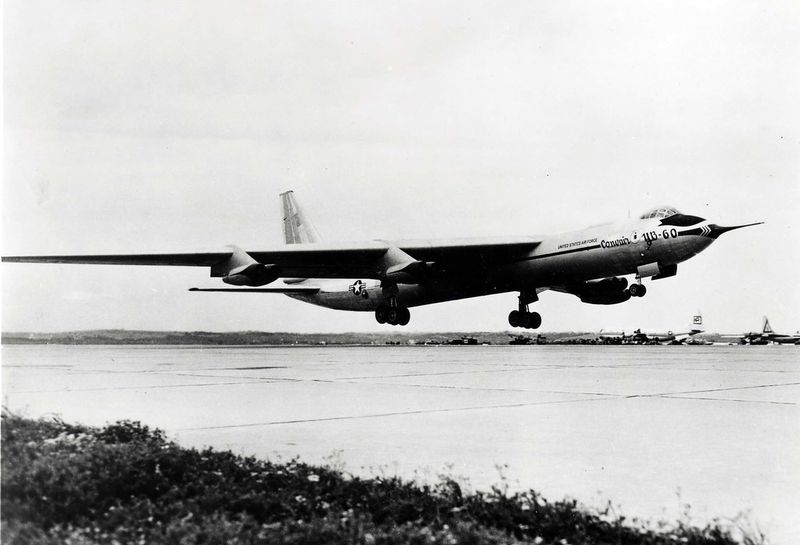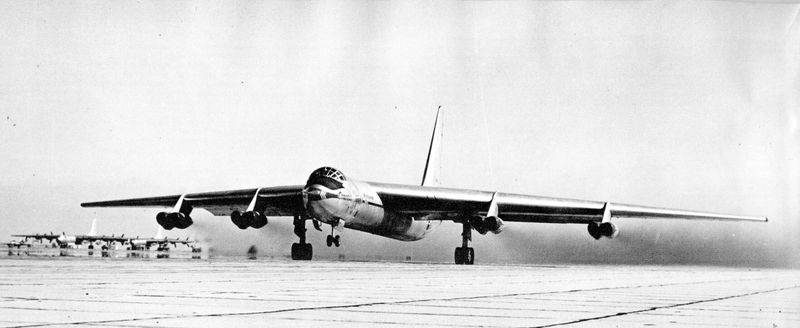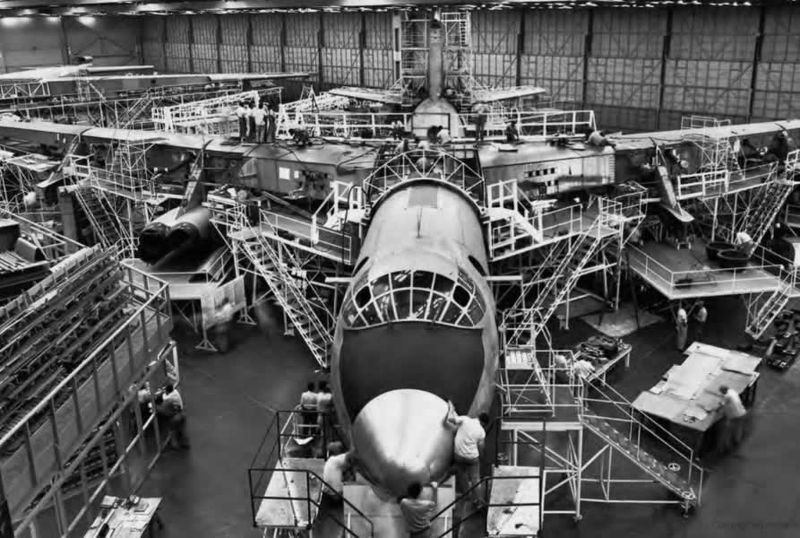The Convair YB-60, a jet-powered redesign of the B-36 Peacemaker, represents a unique chapter in aviation history.
Despite its ambitious design, it was short-lived, overshadowed by more advanced bombers like the B-52.
This article explores the reasons behind its rapid demise and highlights 15 key facts that sealed its fate.
1. Jet-Powered Conversion of the B-36
The YB-60 was a jet-powered redesign of the piston-engine Convair B-36 Peacemaker. It wasn’t a fresh design but rather a conversion, which compromised its performance. The goal was to quickly adapt the B-36 into a jet bomber, but this shortcut led to limitations. The airframe, originally designed for piston engines, struggled to fully utilize the power of jet engines, marking the YB-60 as an interim solution rather than a revolutionary design.
2. Development Started Too Late
By the time the YB-60 flew in 1952, the Air Force was already enamored with more advanced designs, like the B-52 Stratofortress. This late entry into development meant the YB-60 was always playing catch-up. The rapid advancements in jet technology during this era left the YB-60 behind. It was a case of being too late to the party, where the spotlight was already on more promising aircraft paving the future of aviation.
3. Inferior Performance to B-52
Despite its all-jet power, the YB-60 lagged behind the B-52 in several critical areas. It was slower, offered a shorter range, and had a smaller payload capacity. The B-52’s superior performance sealed the fate of the YB-60. In an era where speed and range were paramount, the YB-60 simply couldn’t compete. It was like racing a tortoise against a hare, with the B-52 taking a decisive lead in the bomber race of the 1950s.
4. Prototypes Only, No Production
Only two prototypes of the YB-60 were ever built. The program never saw full production, as it was canceled before that stage. This limited production was a clear sign of the military’s lack of confidence in the design. The prototypes served as a testbed but never progressed beyond that. The decision to halt further development reflected the aircraft’s inability to meet the evolving demands of aerial warfare at that time.
5. Outclassed in Flight Testing
During comparative tests, the YB-60 was consistently outperformed by the B-52. The B-52’s speed, maneuverability, and overall design placed it miles ahead. These tests underscored the YB-60’s inadequacies. It was a harsh reality check that exposed the limitations of a bomber that was more a relic of the past than a harbinger of future air dominance. The B-52 emerged as the clear winner in the skies, leaving the YB-60 grounded in comparison.
6. Retained B-36 Aerodynamics
The YB-60 retained many of the B-36’s design elements, which resulted in a bulkier shape with greater aerodynamic drag. Unlike the sleek, swept-wing B-52, the YB-60’s design was reminiscent of an earlier era. This aerodynamic inefficiency was a significant drawback, as it reduced speed and fuel efficiency. The design choices reflected an attempt to retrofit an old concept rather than innovate, which hampered its competitiveness in modern aviation.
7. Jet Engines with Design Flaws
Although the YB-60 was equipped with eight J57 turbojets, the airframe was not optimized to take advantage of their power. The original design for piston engines limited the effectiveness of these modern jet engines. This mismatch between engine capability and airframe design highlighted the compromises made during its development. It was akin to putting a powerful engine in an old car frame, unable to fully harness the potential of modern technology.
8. Boeing’s B-52 Already in Production
The B-52 had already begun its production stages, securing its position as the Air Force’s bomber of choice. This head start in production made the B-52 the obvious choice over the YB-60. The established success and reliability of the B-52 overshadowed any potential the YB-60 might have had. With resources and focus shifted towards the B-52, the YB-60 was left in the shadows, unable to make its mark in the aviation world.
9. Shift in Political and Military Priorities
The era’s Cold War urgency and strategic planning favored proven, high-performance aircraft. The YB-60, seen as an experimental alternative, couldn’t meet these shifting priorities. The focus was on readiness and reliability, qualities the YB-60 hadn’t demonstrated. As political and military landscapes evolved, so did the expectations for military assets. The YB-60 was out of step with these changes, contributing to its early demise in a rapidly changing world.
10. Lack of Unique Advantages
The YB-60 offered no capabilities that were superior to existing or emerging bombers. Without unique advantages, there was little incentive for the Air Force to pursue it further. It was a jack-of-all-trades but master of none, unable to carve out a niche in a competitive field. The absence of groundbreaking features or technological innovations left it overshadowed. In a race for excellence, the YB-60 failed to stand out in any significant way.
11. A Stopgap, Not a Game-Changer
Designed as a quick-response project, the YB-60 lacked the innovation and forward-looking design of its competitors. It was intended to bridge a gap rather than set a new standard. This transitional role limited its impact and appeal. While other bombers were pushing boundaries, the YB-60 remained a step behind. It was a temporary fix, not a visionary leap, leaving it as a footnote in the annals of aviation history rather than a headline.
12. Poor Crew Accommodation and Avionics
Inside the YB-60, crew comfort and avionics were noticeably lacking. The integration of equipment and electronics fell short of the more refined B-52 layout. These deficiencies made the YB-60 less appealing to those who would operate it. In an era where technology was advancing rapidly, the YB-60’s outdated systems were a handicap. This lack of modernization contrasted sharply with the B-52, which was better equipped to meet the needs of its crew.
13. Changing Strategic Doctrine
During the 1950s, the Air Force began shifting its focus toward intercontinental missile systems and faster, more agile bombers. This strategic reorientation rendered the YB-60 obsolete almost from inception. The emphasis was on speed and adaptability, qualities the YB-60 couldn’t embody. As military doctrine evolved, it left behind aircraft that couldn’t keep pace. The YB-60, designed for a previous era’s needs, found itself incompatible with these new strategic visions.
14. First Flight in 1952
The YB-60’s first flight in 1952 was a pivotal moment, yet it was overshadowed by rapid technological advances. At a time when jet technology was evolving quickly, the YB-60’s late entry placed it at a disadvantage. It was akin to entering a race with outdated equipment, unable to compete with newer, faster contenders. This timing misstep marked the YB-60 as an aircraft caught in the past while the future sped ahead, leaving it behind.
15. Program Canceled in 1953
In 1953, barely a year after its first flight, the YB-60 program was officially scrapped. This abrupt end made it one of the shortest-lived bomber programs in U.S. history. The cancellation highlighted the YB-60’s inability to meet the demands of its time. It was a brief chapter, quickly closed as the Air Force moved on to more promising technologies. The YB-60 remains a lesson in the importance of timing and innovation in military aviation.
